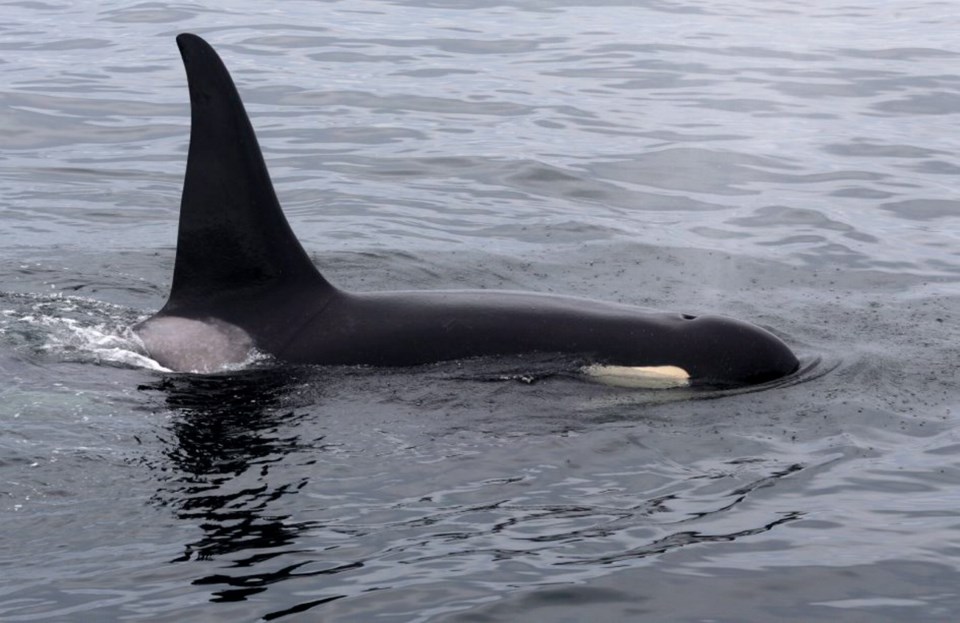VANCOUVER — A bombardment of constant shipping noise and increased tanker traffic is putting whales along the B.C. coast at ever-greater risk, a new international study concludes.
And Haro Strait, between the Saanich Peninsula and the San Juan Islands, could be one of the worst offenders, the study suggests.
Orcas in Haro Strait are experiencing the highest levels of shipping noise along the B.C. coast, despite the strait being designated critical habitat for their recovery, the study found. Northern resident killer whales at Robson Bight, a protected area in Johnstone Strait off northern Vancouver Island, are also experiencing high noise levels.
The study, published in the journal Animal Conservation, noted that shipping noise is considered a serious threat by inhibiting the ability of whales to communicate, search for prey, navigate and select mates. Military sonar and seismic surveys can also damage or even kill whales, other cetaceans and fish.
While endangered killer whales are suffering the highest levels of noise in their designated critical habitat, threatened fin and humpback whales living in some of the quietest waters are also at risk from increased tanker traffic associated with planned liquefied natural gas and pipeline projects.
“Think about the cocktail party effect,” said the study’s lead author, Rob Williams, a B.C.-based marine biologist with the Sea Mammal Research Unit at the University of St. Andrews in Scotland.
“Everyone’s talking and, as the background noise gets louder you can’t hear the person you’re trying to have a conversation with. When it gets noisy, when whales live near a shipping lane, their voice, their sound just doesn’t travel as far as under quiet conditions.”
Researchers measured ocean noise over three years by anchoring hydrophones 1.5 to 2.5 metres above the sea floor at 12 sites along 840 kilometres of B.C. coastline.
They found that median noise levels are enough to “reduce the communication spaces” for fin, humpback and killer whales by one, 52 and 62 per cent, respectively, and under “noisy conditions” by 30, 94, and 97 per cent.
What that means is that under the noisiest conditions, killer whales would fail to communicate with their family members 97 times out of 100 across a distance of up to eight kilometres, and 30 and 94 times out of 100, respectively, for fin and humpback whales across up to 32 kilometres.
The calculation is based on killer whales communicating at a frequency of 1.5 to 3.5 kilohertz, a relatively high pitch that competes directly with shipping noise. Fin whales are less affected because they communicate at a much lower frequency of 17 to 28 hertz, while humpbacks have a broad range of frequencies from 71 to 708 hertz that overlaps shipping.
The low-frequency sound of fin whales can be heard “halfway across” the Atlantic, he said, although it’s unknown whether they are communicating such vast distances, say, for the purposes of mating or co-ordinating feeding.
“Humpbacks have this beautiful haunting song that includes bass and tenor and soprano, more like an orchestra than a soloist,” he added, noting they lack the intensity of fin whales to project across great distances.
Other contributors to the study included B.C.’s Oceans Initiative (a non-profit research organization co-founded by Williams) and the Bioacoustics Research Program at Cornell University in New York.



